Messenger is particularly important for many people, especially for intra-family communication - I've lost count of the number of times a member has said 'Did you not get my message?' and it turned out they'd got confused and sent it by Facebook Messenger rather than Messages or iMessage (or whatever). So it does perhaps pay to keep an eye on Facebook messenger too, even if you're not a heavy user!
Instagram is totally separate, mind you, effectively a fairly recent Facebook acquisition. In theory, there's the excellent third party Winsta UWP, though it's currently a bit unstable and I'll report more on that in the Flow columns here on AAWP. Plus there's a new Instagram PWA incoming from Facebook, which will hopefully work as well as the one Twitter put up online and in the Store. Update: good news and bad news. It's now available for all Windows 10 devices and even installs on W10M, but it doesn't actually run and connect up. Oops.
By the way, you may have thought I was kidding about the bloat of Facebook's old first party clients for Windows 10 Mobile, but I'm not. The 'Facebook' app in the Store was a whopping 168MB and took about 15 seconds to launch on a Lumia 950. Which is ridiculous. And good riddance.
But Facebook does have its uses. It's still loved by non-techy relatives, typically - we all have a cousin or grandparent who will only use it and it's our lifeline to what they're up to. For this reason, and also because lots of lesser web sites let you 'log in with Facebook', saving you having to make accounts for everything, I'd advise not leaving Facebook altogether.
Which leaves the issue of how to access Facebook in 2020, especially under Windows 10 Mobile. Happily, Facebook has to provide a low bandwidth way into its content via the Web and this can be used, either directly, or via a number of 'web-scraping' applications.
1. Directly, in Edge(!)
Facebook is basically a web site (with added apps for convenience), so it's easy to access the main content in a web browser, even a mobile one here. Go to 'm.facebook.com'.
In fact, you can get just a bit more screen real estate and convenience by turning the URL into an 'app' yourself with PAWA or just pin it 'as is' on your Start screen. Or just add it as a 'Favourite'. It's up to you.


Facebook in Edge and (right) Edge via PAWA - in the latter you get better fonts and more screen real estate.
So that's two views of the basic Facebook site with full access, but you can go further (with just one caveat) with a hack of sorts.
In Edge, go into '...' and Settings and then pick 'Desktop version'. Note in particular that you're still going to m.facebook.com, but it's being interpreted in slightly more sophisticated fashion because Facebook's server knows that you're using something (in theory) higher end. So you then get:
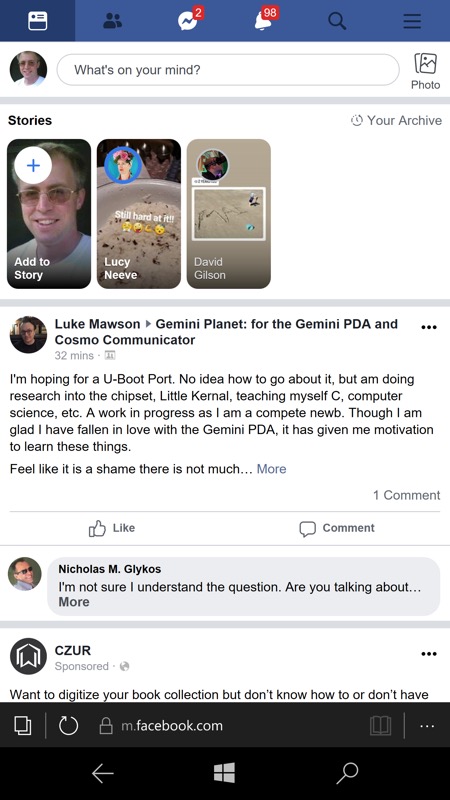
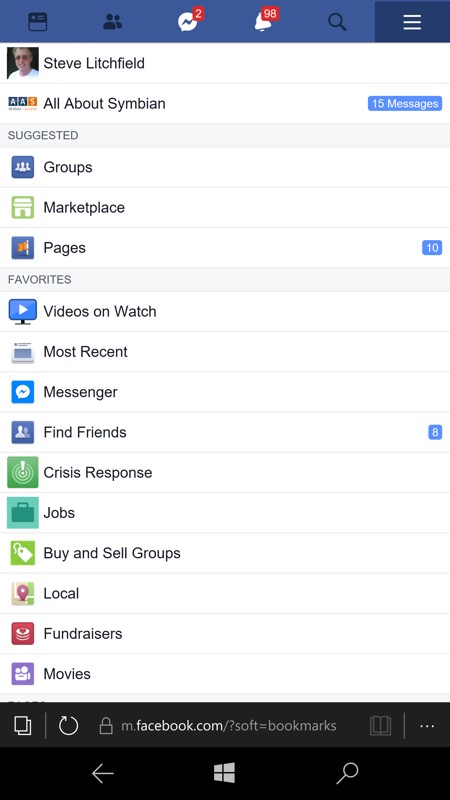
So less clutter at the top, a cleaner layout overall, plus a lot of lesser navigation functions on the hamburger menu, shown on the right here.
I'm calling this latter mode 'Desktop-Mobile-Hybrid' (DMH, for short), by the way, for want of a better name/acronym!
Facebook Messenger needs addressing next, since sending and receiving messages is all handled in the interface here, whether you're looking at the ultra-basic or DMH mode. There's no notification support outside of Edge, mind you, so it really isn't a good idea if people try to contact you urgently in Facebook Messenger and you're using Windows 10 Mobile!
Still, messages are here, all your Messenger chats to your contacts in the past, new messages have notification bells pop up on the top toolbar, and you can drill in to read and reply as needed:
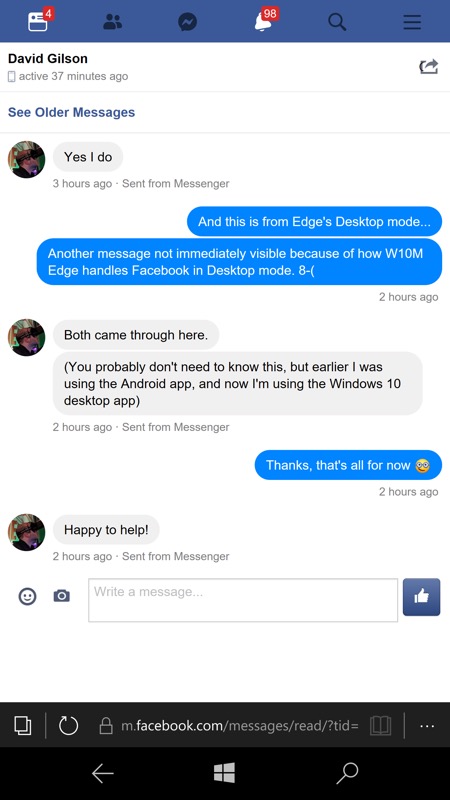
Well, with one major caveat. The DMH mode has a javascript glitch (either at Facebook's end or in Edge locally, it's not clear, but it certainly hasn't been tested in this combination)! So, when you send a new message/reply, it doesn't appear in the message list, even though it has been sent. Worse, when the other person replies, you don't see that either! See the comments in the screenshot above!
You're forced to refresh the page to check, or - easier - just move away from this Facebook pane/tab and then move back to load it again. This is a pain because, apart from this glitch, this DMH mode works really well for Facebook on the go under Windows 10 Mobile. It's not a showstopping bug but... it is a nuisance.
2. LightSocial Pro (or similar)
Now, if the DMH panes look familiar, it's because they're the basis for what I'm calling DMH+ applications. LightSocial Pro is one such, featured here, though SlimSocial and Likebook for Facebook do a very similar job (though their 'Messenger' presentation isn't quite as neat IMHO). In each case, the application presents itself to Facebook as a Desktop browser going to m.facebook.com and then the HTML returned is subtly modified, perhaps setting the background dark (to save power), perhaps media detecting and local saving are made possible, you get the idea. As I say, I'm calling this DMH+. Here's a brief walkthrough using LightSocial Pro:
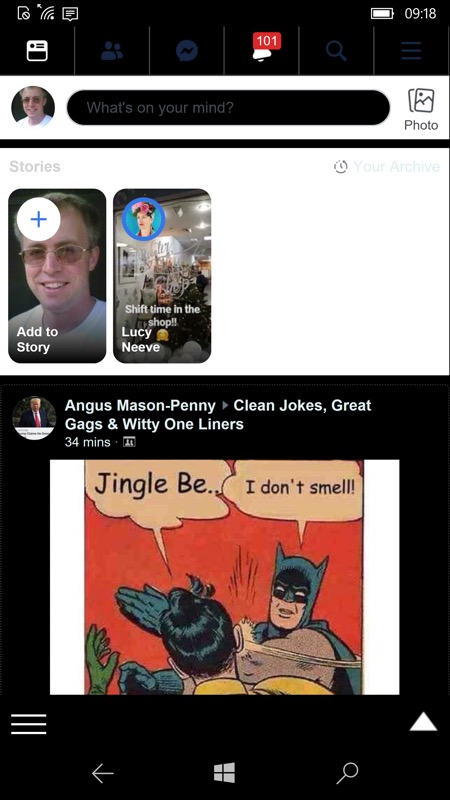
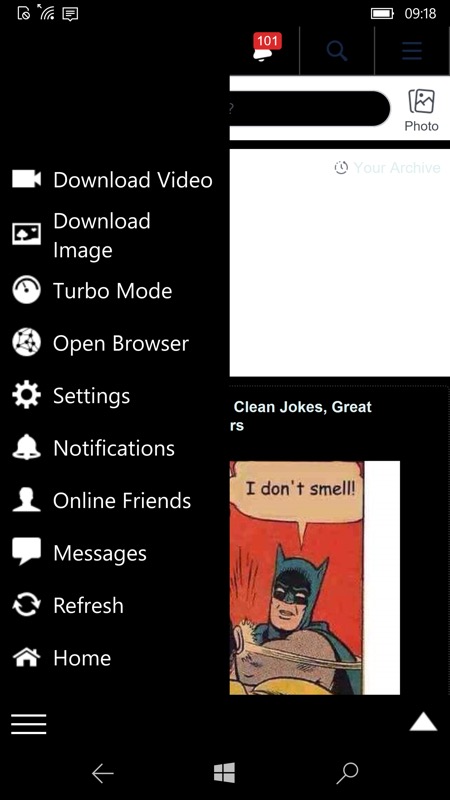
Here on the (light) page, LightSocial Pro's dark mode is really, really dark, but you can see the dark blue control elements on the physical phone screen, don't worry! Here's the start of my Facebook timeline and, by tapping on the hamburger control bottom left, up pops LightSocial Pro's own 'helper' menu (shown on the right, above)...
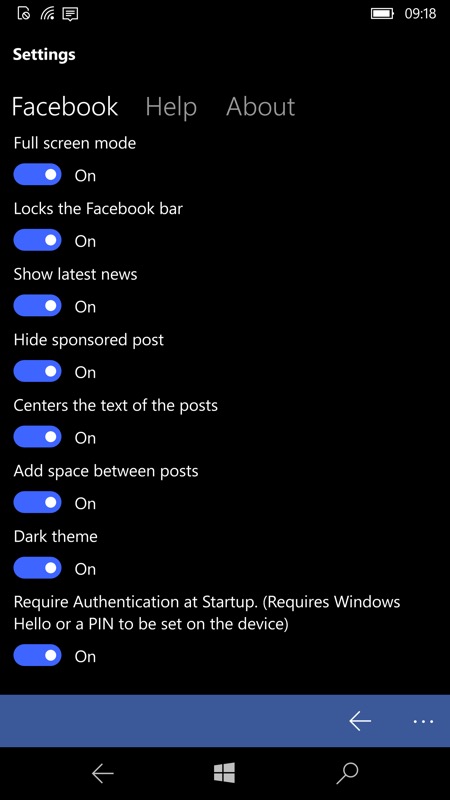
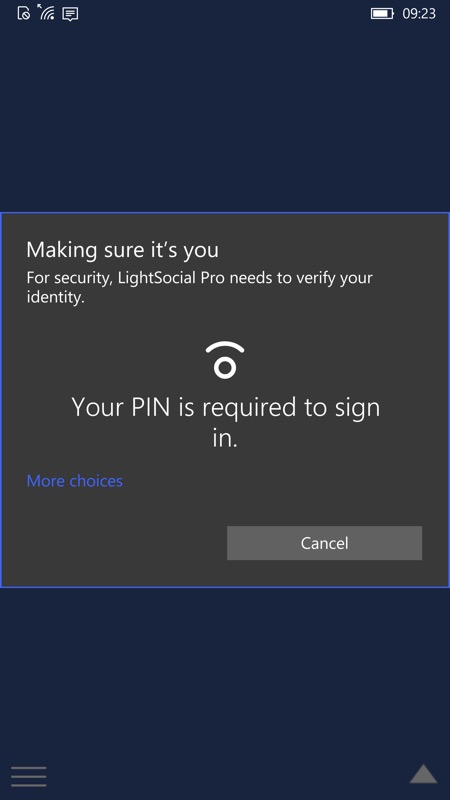
Of particular interest is LightSocial Pro's own Settings pane, with helpful toggles to hide ads, go full-screen, go dark, lock the top Facebook bar, and (shown on the right here) require Windows Hello authentication to stop little Johnny from accessing your private Facebook stuff...(!)


When viewing a Facebook post with an embedded video, you can grab a local copy if you want by just starting it playing and then using the 'Download Video' function on the LightSocial Pro helper menu...
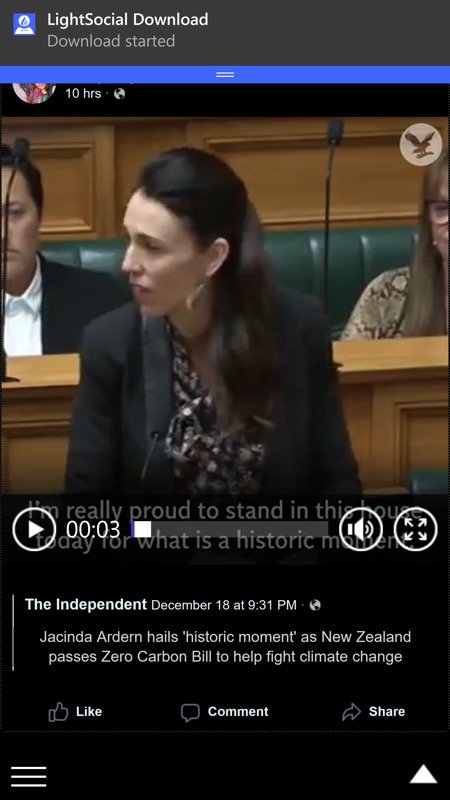

...the download is started, you're notified by toasts, including when it finishes, and then you can find it later (as shown right) in your 'Facebook Downloads' folder in your internal storage on the phone.
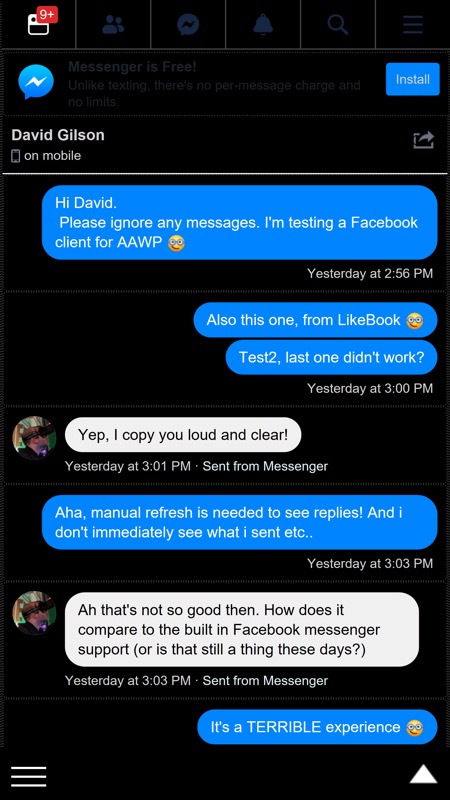
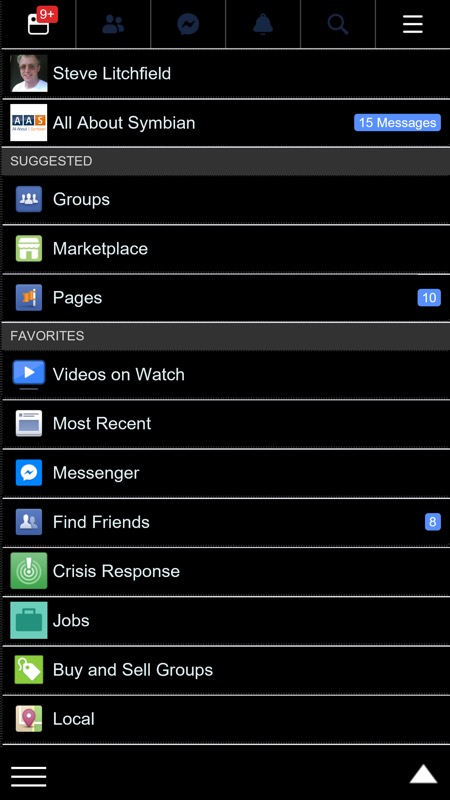
Facebook Messenger looks snazzy in dark mode here, but behaviour is sadly (and understandably) the same as in DMH mode above, so you get the oddity of firing off messages successfully but you can't see them or any replies until you move away from this conversation and then back into it! #facepalm
Two main - and related - approaches then, each more satisfactory than you might think overall (not least in terms of not having to endure the original bloated Facebook code) but each flawed in terms of Facebook Messenger operation. It would be nice if Facebook opened up its APIs to allow third party clients, but I'm not holding my breath. Plus it's late in the day for UWP apps for Windows 10 Mobile now...
Oh, as noted in the comments below, there's also 'Messenger for UWP', which takes the glitchy Facebook Messenger web view data above and puts a complete new UI/skin on it, along with detecting new messages and throwing up Windows 10 notifications:

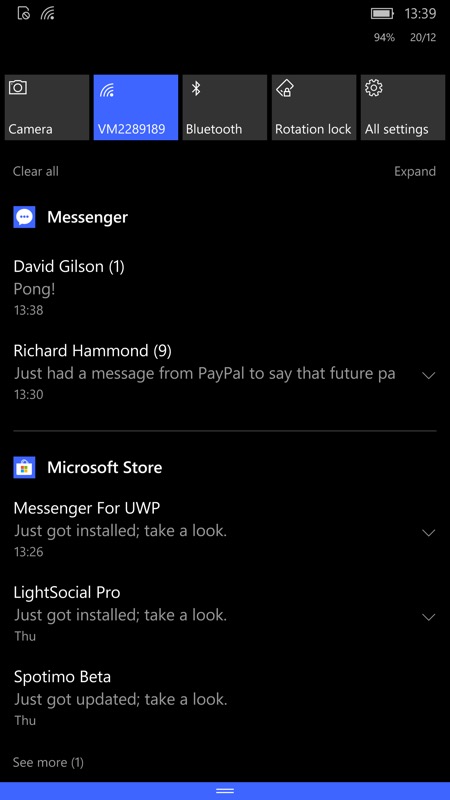
A confusing UI - in theory you swipe down the left to a contact and there's the chat, but in practice it's all so slow and unpredictable; (right) you do get notifications though (albeit in duplicate - here I've swiped away half a dozen to just leave one from each contact!
What's not to love about this? Well... it's slow to start, slow to work, produces duplicate notifications, and is impossibly hard to navigate in terms of finding anybody, in my experience, with notifications not actually directing you to the appropriate chat. Maybe the developer can leap in with a major update here?
________________
Do you use Facebook? If so, how often, and how do you access it under Windows 10 Mobile (or Windows Phone)? Data points welcome!
